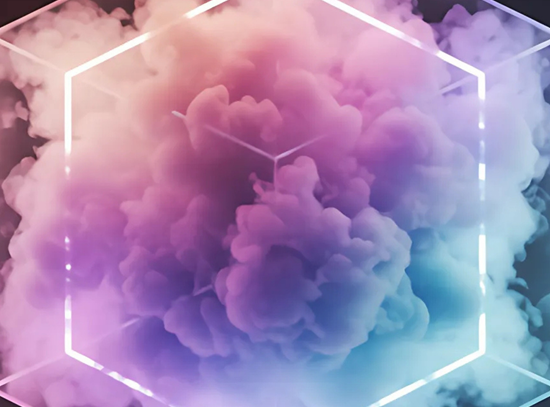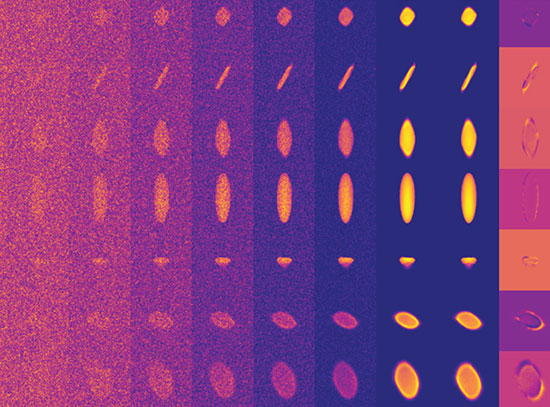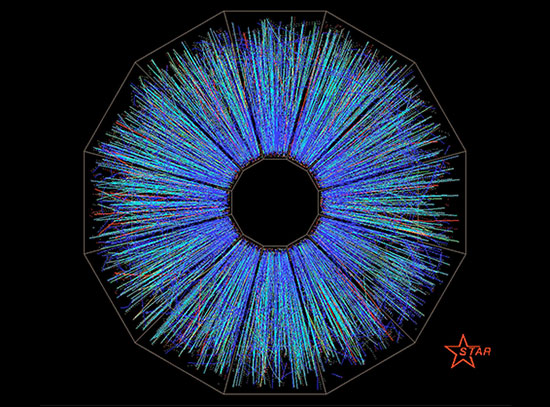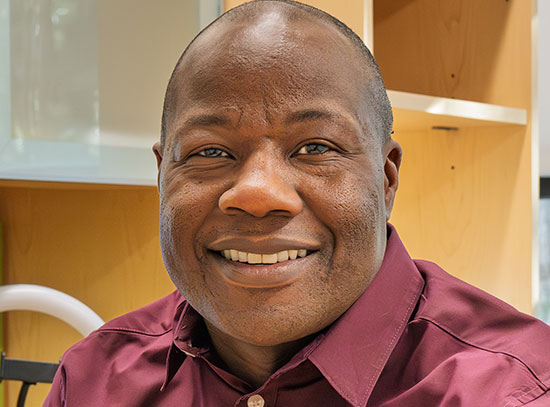Brookhaven Lab Trains Future Space Scientists for Second Year
June 10, 2005
Upton, N.Y. - How does deep-space radiation affect the brain? The heart? What is the danger of developing cancer during long space voyages - and how can we best shield against it?
These and other questions about health and space travel are now being examined by a group of 15 graduate students, post-doctoral fellows and working scientists participating in the NASA Summer Student Program at the U.S. Department of Energy's Brookhaven National Laboratory. Sponsored by NASA and organized and managed by Brookhaven Lab, Loma Linda University Medical Center, and Universities Space Research Association (a consortium of universities, research organizations, and governmental groups involved in space research), the goal of the program is to provide a "pipeline" of researchers for the nascent field of space radiobiology.
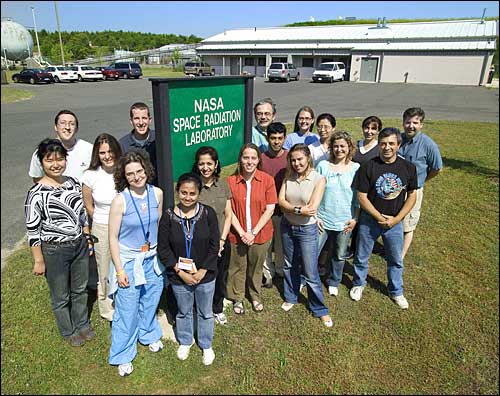 enlarge
enlarge
Students enrolled in the NASA Space Radiation Summer School at Brookhaven (click on image to download hi-res version).
"We need to better understand the effects of ionizing radiation found in long-distance and long-term space flights, and how to best shield against it," explained Marcelo E. Vazquez, a medical scientist at Brookhaven Lab who co-directs the NASA Summer Student Program with Gregory Nelson of Loma Linda University. "There is a strong need for scientists dedicated exclusively to this field who will ask the best questions and seek good answers." Now in its second year, the program is training future space radiobiologists from around the country and throughout the world (participant list) in an intensive three-week residential program at Brookhaven Lab's NASA Space Radiation Laboratory (NSRL) and Medical Department. NSRL is a unique scientific facility that simulates the harsh radiation environment of outer space.
Studies at NSRL focus on how this radiation can damage the central nervous system and other bodily systems - as well as how the intense rays may promote the development of cancer. NSRL researchers are also looking at ways to protect against these dangers - through shielding and other strategies to minimize the risk to space travelers.
"We have again found a group of high-quality students interested in immersing themselves in this field," said Vazquez. "Just like last year, we hope and expect that many completing this year's program will go on to conduct experiments in the NSRL." Vazquez serves as Brookhaven Lab's experimental liaison in the Medical Department for the NSRL research program and is also the National Space Biomedical Research Institute/NASA Space Radiation Liaison.
The summer program brings together biological and physical scientists to work jointly on leading problems in space radiobiology. Students participate in both classroom activities and scientific experiments, working side-by-side with top space scientists from research organizations such as NASA, Brookhaven Lab, Loma Linda University, Columbia University, University of Pennsylvania, and University of California, San Francisco. Experimental creativity and interdisciplinary approaches are emphasized.
"One branch of science cannot provide adequate answers to the complex questions raised by space radiation," said Vazquez. "So we actively seek the most talented investigators and emerging scientists from a range of disciplines who will learn a range of techniques and approaches that will enable them to make an impact in this growing field."
NSRL is a $34 million facility that was built cooperatively at Brookhaven Lab by NASA and the U.S. Department of Energy. Operational since 2003, NSRL is one of the few places in the world that can simulate the harsh cosmic and solar radiation found in space. The lab employs beams of heavy ions extracted from Brookhaven's Booster accelerator - the best in the U.S. for studying the effects of radiation on living organisms. Scientists from more than 20 research institutions from throughout the U.S. and abroad work year-round at the facility to learn about the possible risks to space explorers exposed to deep-space radiation.
For information on NASA Summer Student Program sponsors, please visit www.nasa.gov (NASA), www.usra.edu Universities Space Research Association), and www.llu.edu (Loma Linda University Medical Center).
2005-10335 | INT/EXT | Newsroom





